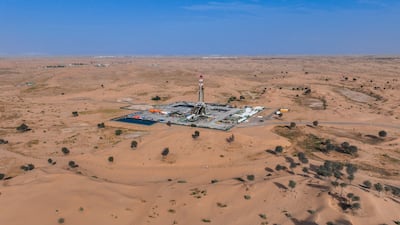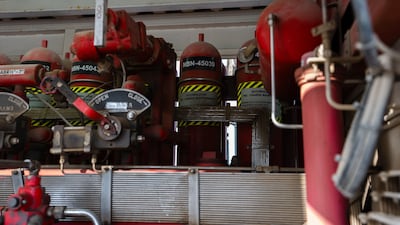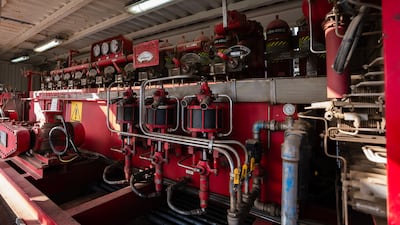Plate tectonics, the fundamental theory of our planet, is so recent that its discoverers are only just passing from the scene.
While the pioneers of quantum mechanics or relativity belong to the early twentieth century, Jason Morgan of Princeton University died in July, aged 87, while three other greats, Dan McKenzie, Frederick Vine and John Dewey, at 82, 84 and 87 respectively, are still with us.
Their theory continues to surprise and illuminate, explaining the distribution and evolution of earthquakes, volcanoes, mountains, past climates – and hydrocarbon and mineral resources.
Of course, they had precursors. German meteorologist Alfred Wegener in 1912 pointed to numerous lines of evidence that now far-separated continents, such as Africa and South America, fitted together neatly and must have once been joined. But he could not explain how these vast masses of rock could have ploughed through the ocean floor.
British geologist Arthur Holmes solved this problem by proposing in 1919 that continents moved passively by the flow of the hot mantle rocks beneath them over millions of years.
Measuring the proportions of radioactive isotopes in rocks, he was the first to come to an accurate estimate of the age of the Earth, at around 4.5 billion years, giving enough time for plates to move long distances at a few millimetres per year.
After the Second World War, sonar measurements of the ocean floor by Princeton’s Harry Hess revealed the true geometry and scale of the mid-ocean ridges, where new crust is made, and trenches, where it sinks back into the mantle.
In 1963, Cambridge’s Mr Vine – as work for his doctoral thesis – and Drummond Matthews published measurements of the magnetism of the oceanic rocks, showing neat stripes where the Earth’s magnetic field had reversed, and allowing the two sides of each mid-ocean ridge to be matched up and dated.
The seminal year was 1967. Mr Morgan’s paper demonstrated how the Earth’s surface was divided into about 12 large, rigid plates, which shift relative to each other, carrying continents and islands on top of them.
Cambridge University’s Mr McKenzie, who taught me, had only just achieved his PhD, on convection in the mantle, when he published in Nature on the mathematics of oceanic plate movement.
It now seems amazing that we were almost ready to land on the Moon before we knew the basics about how our own Earth works.
Before plate tectonics, we did not understand why the Pacific is ringed by volcanoes and earthquakes, why the Himalayas are where they are, how dinosaurs managed to cross from South America to Africa, or why the rocks of the Middle East record both hot deserts and frozen ice-caps.
Now we see that different parts of the Pacific plates are diving under areas such as the Americas, Japan and New Zealand and melting as they sink, feeding volcanoes with magma and recycling carbon and water. We know that India is colliding with Asia, pushing up the world’s greatest mountain range, and profoundly altering the local and global climate.
The great oilfields of the Middle East were mostly found by good local geological work before the knowledge of wider plate movements.
But plate tectonics explains the region’s enormous bounty of oil and gas.










As Arabia drifted gradually from chilly southern latitudes across the equator, organic matter accumulated on the floor of vast shallow subtropical seas. Then, some 50 million years ago, the Arabian plate and the attached Zagros of Iran and Iraq began colliding with central Iran, cooking this material into petroleum.
Mr McKenzie’s discoveries were well-timed for Europe. He modelled the creation of sedimentary basins, where part of the Earth’s continental crust is stretched and sinks.
The North Sea is a classic example of such a basin. In 1967, the UK North Sea’s first gasfield started production. Further exploration made it into one of the world’s leading petroleum-producing areas, helping to revive the UK’s economy and Europe’s energy security after the 1970s oil crises.
The fit between Africa and South America noticed by Mr Wegener has been fruitful more recently. The find of the Jubilee field in Ghana in 2007 led companies across the Atlantic to French Guiana, then west to Guyana and Suriname, rewarded since 2015 with a string of huge oil finds.
But this is not just as simple as matching up former conjoined regions. The “pre-salt” region in Brazil has been enormously successful for huge oil and gasfields; its equivalent basin in Angola holds much less, and that mostly gas.
The recent massive finds in deepwater Namibia by TotalEnergies, Shell and Galp have now turned attention to the corresponding but unexplored area across the Atlantic. More subtle geological differences between the African and South American margins suggest that Argentina and Uruguay might be even more promising than Namibia. By about 2027, we should know whether this potential will be borne out.
Such geological considerations also control where critical global minerals are found – such as the belt of copper and silver down the Pacific coast of Central and South America.
It tells us why Oman and the northern UAE have some of the most promising rocks globally for trapping carbon dioxide, relics of an ancient ocean plate forced up over land. And we have some grasp of past climatic shifts, such as how the split of Antarctica from southern South America allowed freezing seas to sweep round the southern continent and usher in the most recent Ice Ages.
There is still much we do not fully understand about plate tectonics. When did it begin – 3.5 billion years ago or even earlier, or much more recently, after the Earth’s mantle had cooled? And beyond our pale blue dot, our closest neighbours, Mars and Venus, don’t seem to have plate tectonics, but do Earth-like planets in other solar systems have them? Is its recycling of elements and stabilisation of climate essential for complex life to evolve and survive?
This recent, rich and profound framework continues to yield new material and intellectual benefits.
Students and scientists in the Middle East are fortunate to have some of the most striking and important geology in the world around them.
And it’s a rare situation in science when the giants of such a fundamental advance are still around to instruct and inspire us.
Robin M. Mills is chief executive of Qamar Energy and author of The Myth of the Oil Crisis


